You’ve harvested the last of your squash, beans, and tomatoes. And now you are thinking about your more cold hardy crops. You may have heard that you can store carrots in the ground over winter – and perhaps you could use some pointers on how best to do this.
While keeping them in the garden isn’t the only way to store this crop, it is a useful method for those of us with cold winters who are low on cool-storage space. And if you’ve followed our guide to growing carrots, you’ll more than likely have a bumper crop by now!
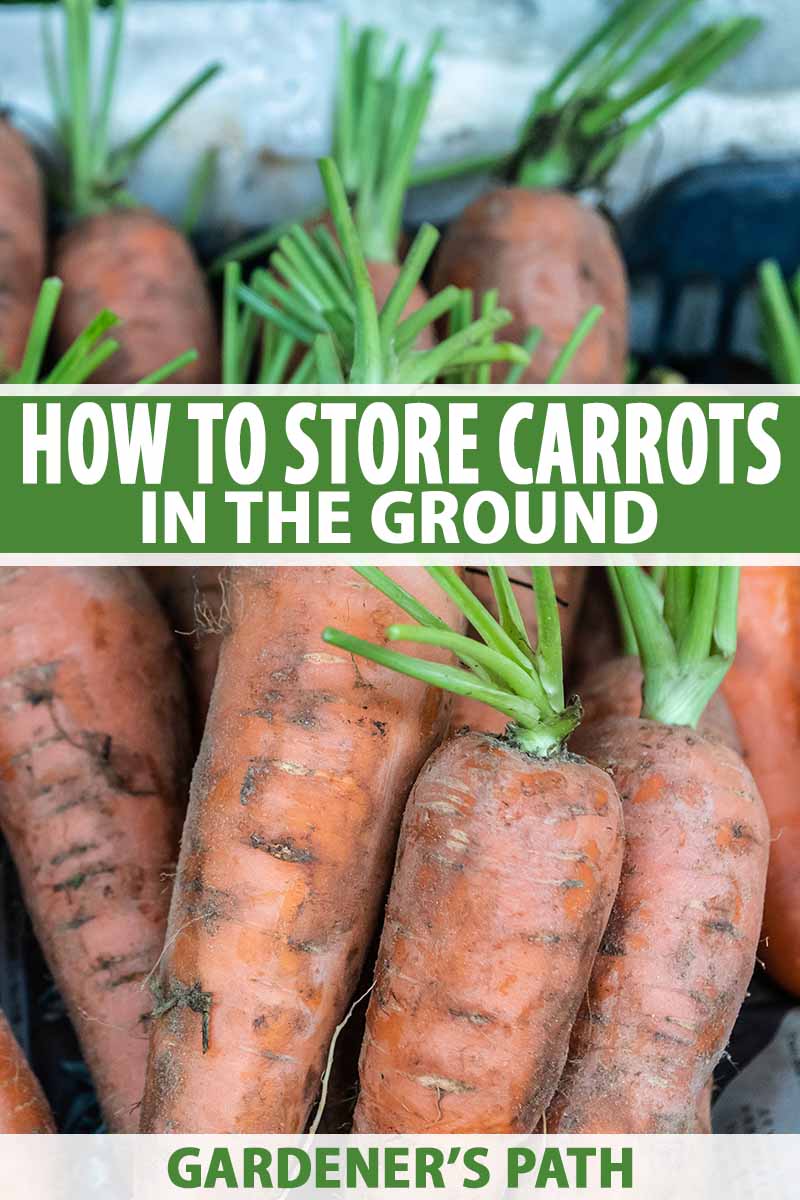
We link to vendors to help you find relevant products. If you buy from one of our links, we may earn a commission.
After all, ideal storage for your carrot harvest involves covering them with sand and storing them at 32 to 40°F with a relative humidity of 90 to 95 percent.
If these recommended conditions sound an awful lot like what’s going on in your garden soil during the winter, it may make good sense for you to leave this root vegetable in the ground until you need it.
In this article, we’ll get to the root of storing carrots in this way. Here’s what we’ll cover:
What You’ll Learn
This Method Is Not for You If…
In some cases, storing this root vegetable in the garden through the winter may not be advisable. I’ll save you some time by going over those cases first.
You may want to harvest your carrots instead of leaving them in the garden if:
- Your winter soil temperatures do not stay below 40°F – it needs to be cold enough to stop all growth.
- Your winters are very rainy, or your soil is not well-draining – in these cases your crop may rot in the ground.
- Your area is prone to carrot rust flies – this pest will thrive if roots are left in the soil over winter.
- You have planted a variety that is not designed for winter storage, such as a coreless cultivar.
If storing this vegetable in the ground turns out not to be the best method for your situation, harvest your carrots and keep them in your fridge, a root cellar, or a cool basement. And don’t forget these other things to do in the garden before winter.
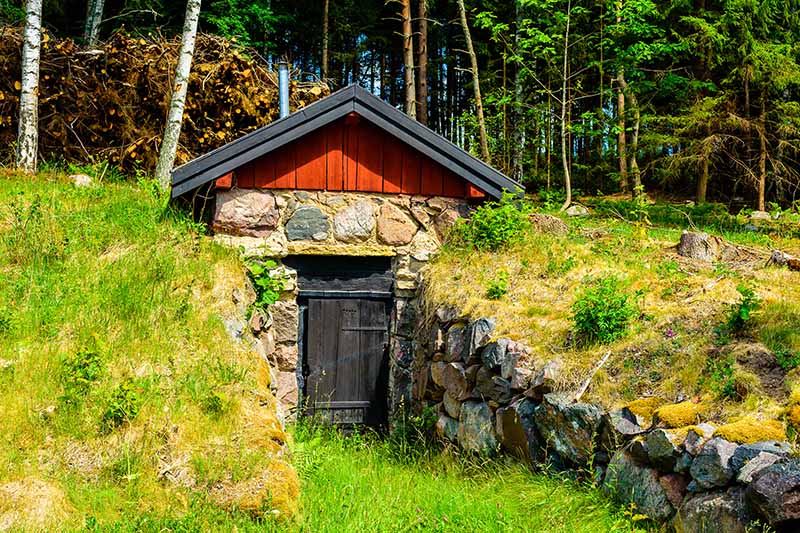
On the other hand, if leaving them where they are sounds perfect, there are a few steps you’ll want to take to store them successfully.
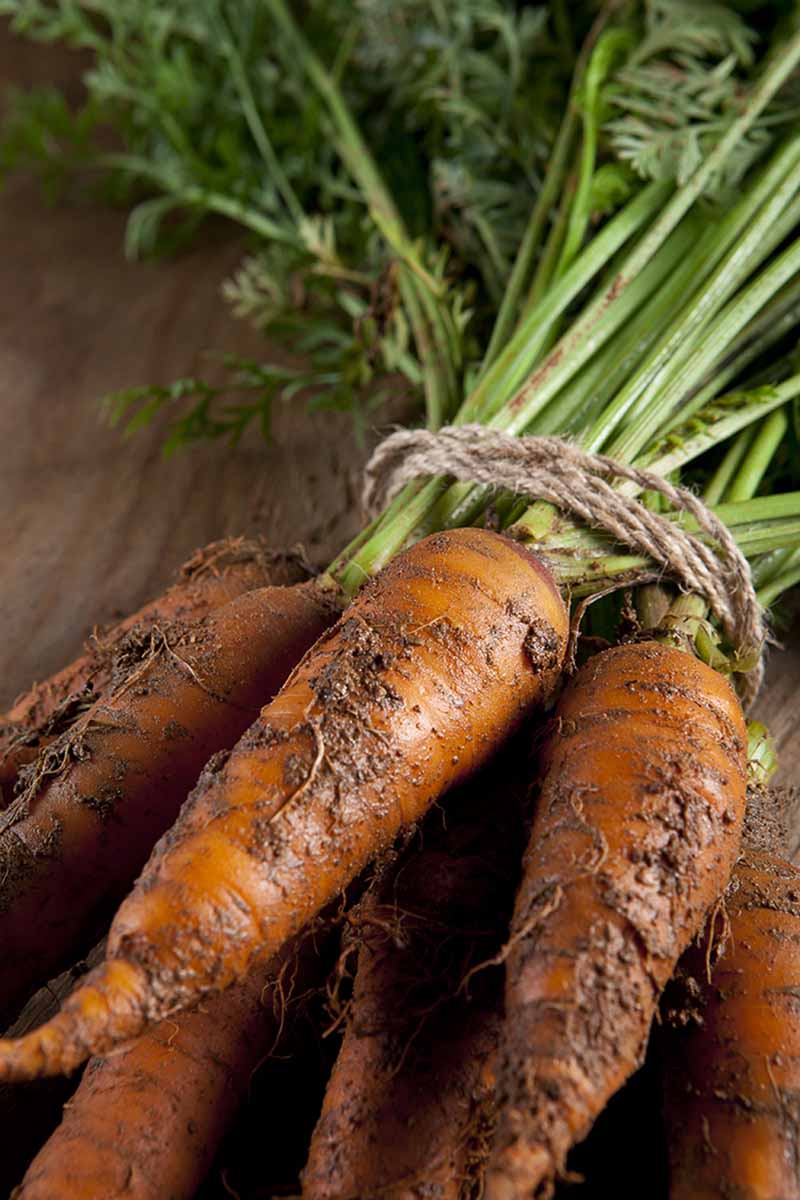
But before you get started, you’ll need to know the best time to store your carrots for winter.
When to Put Your Crop to Bed
It will be time to get busy preparing your crops after you have had a couple of frosts – which will make your carrots sweeter – but before the ground freezes.
How do you know when your ground is frozen?

According to the Western Regional Climate Center, when air temperatures reach 24°F or lower, the ground begins to freeze.
Whether the soil stays frozen and how deeply it freezes will depend on many factors, including “the duration and severity of the freeze, soil moisture, and soil type.”
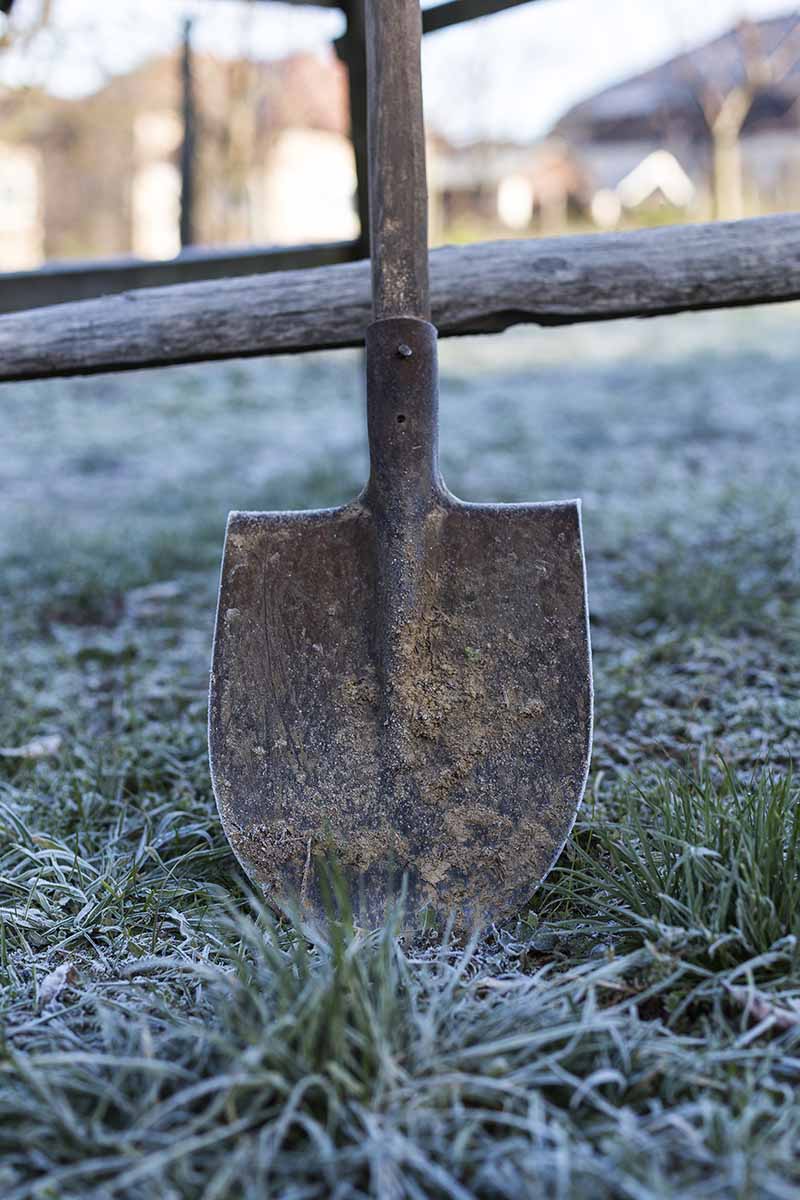
So don’t wait for a hard freeze, keep your eye on the weather report, and be ready to start preparing your carrots after a couple of light freezes.
To learn more about how varying degrees of cold will affect your plants, read our article on frost damage.
Mark Your Crop
Your light frosts have come and gone, and now you’re ready to put your carrots to bed. And for that, they’ll need covering. But before you start covering them up, there’s an important step to take so that you can find exactly where they are when you are ready to harvest them.

You will be covering them with mulch, so make sure you have a way of finding them again first. Mark your carrot patch with a sign, stick, or some other means to remind yourself that there is a crop of root vegetables there for later eating.
In my garden, I use sticks for this purpose.
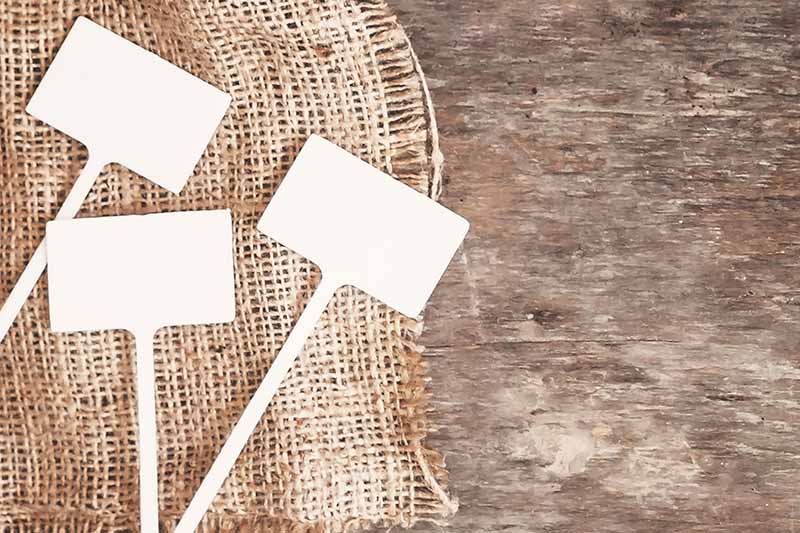
If you get lots of snow in your region, make sure your marker is tall enough to exceed than your expected snowfall, in case you want to dig some of your carrots up before the snow melts.
Lop the Tops Off
After marking your beds, the next step is to cut off the greens. There are a couple of reasons why you should do this:
First, when carrot greens are left on, they continue to draw up energy from the roots. This results in vegetables that are not as sweet as they would have been otherwise.
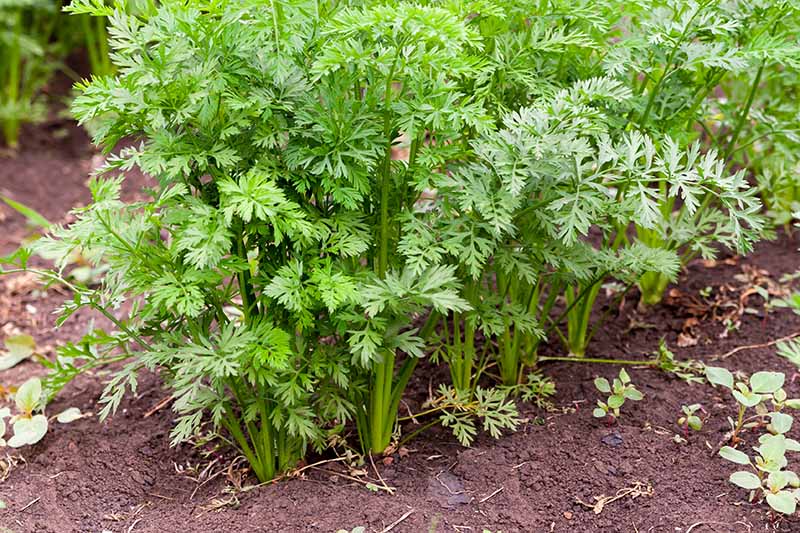
And because you are covering them, in more humid climates, your buried carrot greens will likely rot – ruining your crop.
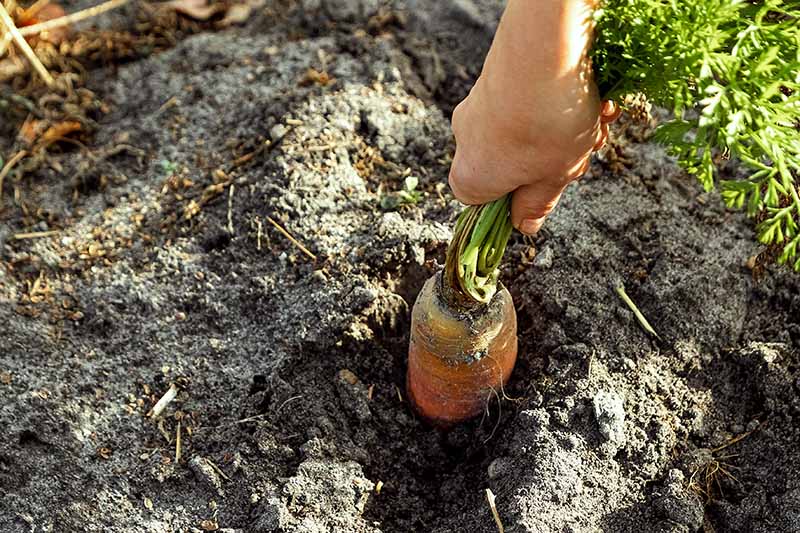
When you cut the green tops back, leave about 1/4 to 1/2 inch of green stem intact.
Cover Your Roots
Now that you have marked your beds and trimmed off your greens, you are ready to cover your carrots.
There are different materials you can choose from to use as an insulating mulch for your crop: straw, hay, or leaves. Use the material that is most accessible to you, as you’ll need quite a lot of it.
Compost, bark, woodchips, and other decorative mulches are not suitable, as the covering that we are going for here is intended to insulate, not to preserve moisture.
Make sure your mulch is dry, as a soggy mulch can result in a moldy crop.

If you wish, you can add a layer of soil over the carrot crowns before mulching to help insulate them.
Cover your carrots with a 12-inch-thick layer of your preferred mulch, making sure to cover the ground out to a perimeter of at least 12-18 inches either side of each plant.
Some gardeners put a row cover – or even an old bed sheet – over the top of the mulch layer to keep it from blowing away in windy areas.
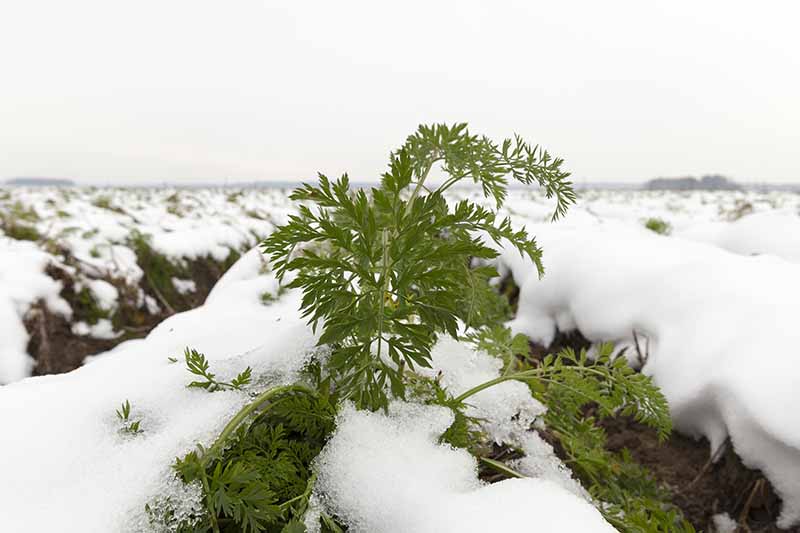
If you live in a climate where snow covers the ground for most or all of the winter, a blanket of snow can also provide extra insulation for your carrot beds.
Can It Be Too Cold For Ground Storage?
Most extension offices recommend harvesting carrots from the ground before the soil freezes.
So does that mean if you live somewhere where the soil freezes in winter that you cannot store these root vegetables in the garden? Not necessarily.
Many gardeners, including Jim Hole at the Edmonton Journal, claim that well-mulched carrot patches can resist even sub-zero air temperatures.
This has also been my personal experience in USDA Hardiness Zone 5a. Last year, some of my unmulched carrots survived air temperatures at least as low as -16°F. These were protected by only a layer of snow.
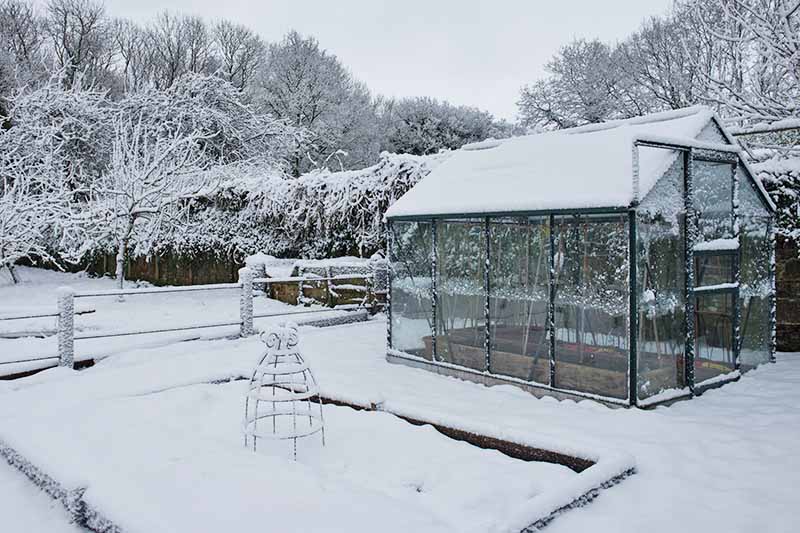
For those of us with average winter air temperatures below 24°F – the ideal soil temperature for storage of 32-40°F – keeping these root vegetables in the soil is certainly worth a try when they are mulched and protected with a blanket of snowfall, even in climates where the ground is frozen throughout winter.
Underground, the temperature of the soil will always be slightly higher than the ambient air and ground temperature.
When to Harvest
If your carrot beds are well mulched, the soil in these beds should not be as cold as the surrounding soil, and you can harvest the roots throughout the winter, as needed.
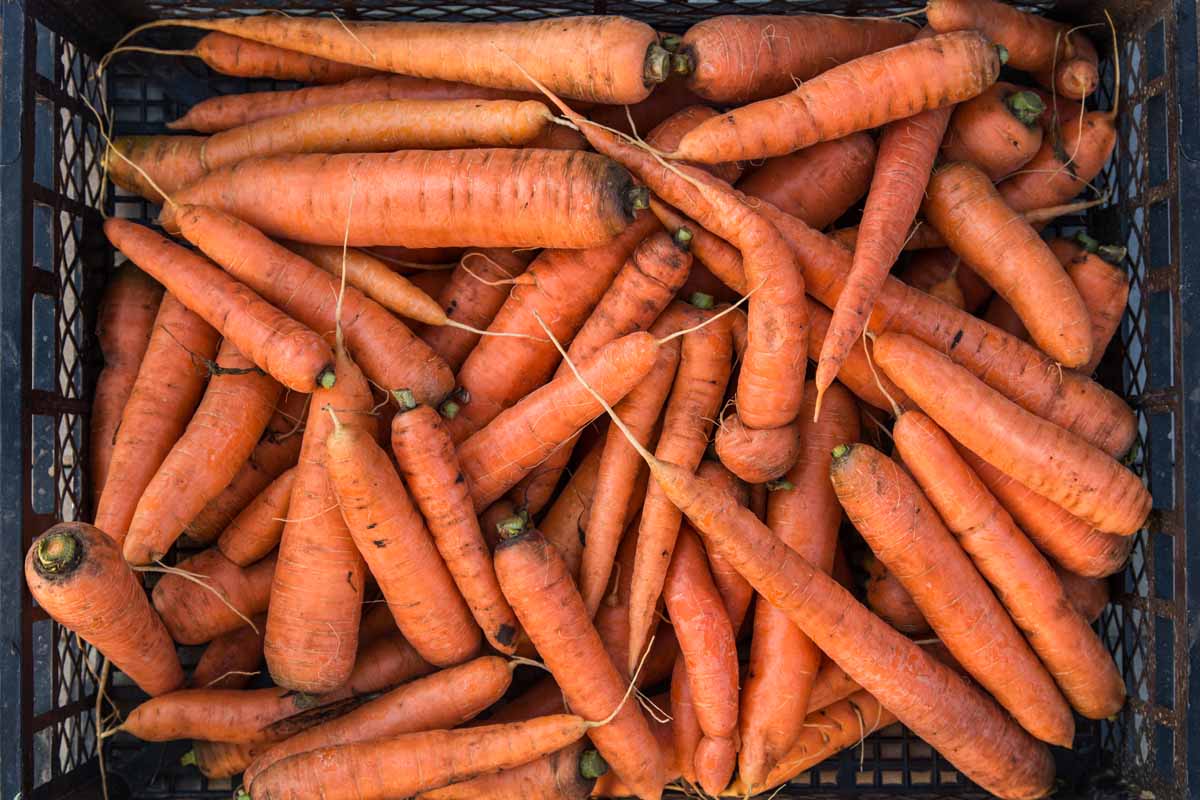
Unless you are overwintering your crop for seed production (a process known as vernalization), you’ll want to harvest your carrots before spring, when they’ll start growing again
Once spring starts, the carrots will resume sending energy into the greens, which will grow back. Energy spent on carrot tops means less energy saved in the roots, which will result in a loss of sweetness, and a woody and tough texture.
Leaf Them in the Ground
Now that your carrots are put to bed for the winter, their beds well marked, their greens removed, and their roots resting sweetly under a thick insulating mulch, it’s time to curl up, do some winter garden planning, and dream of next year’s carrot varieties.
Will you be leaving your carrots in the ground this winter? Let us know in the comments – and make sure to tell us what region you’re in so that your experience can help others.
For more guidance on harvesting and storing root vegetables, check out these articles next:
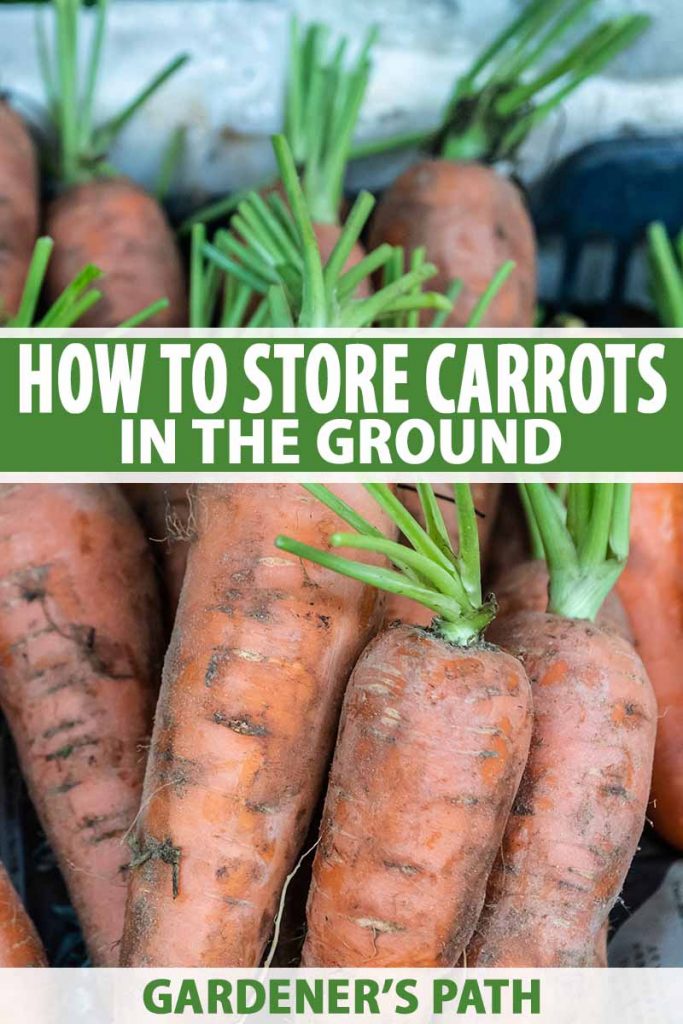

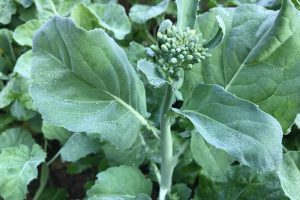

Greetings from the western end of the UP of Michigan. Hardiness zone 4a. As we get lots of snow early in the year, normally mid to late Nov till late April. On the average of 200 inches. I have always left a few carrots on the ground and ignored them till the snow leaves and the frost comes out of the ground. Just let the natural leaf cover settle. Some years I lose a bunch to rot, if it warms up to quick. This year had almost perfect spring of slow melting snow and mild warm weather. Today a pulled… Read more »
Hi Bill! It’s great to hear that overwintering carrots is working for you there in the Upper Peninsula! It seems like a reasonable trade-off to me to lose a few carrots to rot when so many of them survive freezing temps just fine. Thanks for sharing your experiences with our readers!
Thanks for a great article. My question is does any of this make a difference if my garden is a raised one? I have plenty of carrots I’d like to leave in the ground but I will pull them out depending on your advice. Note: I live in Logan, Utah if that helps!?!
Hi Trish! Thanks for letting me know where you live, that helps a lot! I’m in Roosevelt, UT, and we are in the same or similar USDA zone, so I know that in a raised bed, your carrots are probably going to freeze over winter. The ground insulates them, but in a raised bed, they aren’t going to have that insulation. You could always try to insulate around your raised beds, but since it’s not sure to work, (not to mention it would probably be a mess to look at) if I were you, I think I’d plan on harvesting… Read more »
I planted carrots late and they have nice top but are very small. I live in northern utah. I was wondering if I covered them and made a plastic tent over them if they would mature come spring?
Hi neighbor! You can certainly give it a try. There’s always a risk of the carrots freezing in the ground if the ground is frozen for too long and they aren’t insulated enough. If you decide to try it, bury them deeply with soil and then maybe another layer of mulch. I overwintered some carrots last year – most of them made it through the winter, but a few of them did freeze and were inedible. If you decide to give it a shot, make sure you dig them up in the spring before it starts getting too warm –… Read more »
Here in north central Ohio ( near Indiana) I usually cover my carrots that are left in the garden at the end of the season. I mulch all the leaves in the fall and these are spread thinly over the garden. I save a bag for the carrots. After several good freezes I cover the carrots with 6 to 8 inches of leaves. Carrots will be fresh and tasty until I finish them off in April. The only problem that will occur is if mice discover the carrots. It’s a perfect winter home. It’s disappointing but at least the carrots… Read more »
Hi Mike,
Thanks for sharing your experience with overwintering your carrots in the garden – it’s always helpful to hear about the specific locations where this technique works well so that others can try the same.
And it’s very kind of you to not begrudge your neighboring critters a little of your garden produce.
Happy winter to you – and happy carrot overwintering!
Good article I wish I had found it this fall. Never the less, we just dug 4 pounds of carrots from our raised bed in zone 3b Wisconsin. Third harvest since snow and freezing. Snow depth about 20″ and ambient air at -5, More bitter cold to come and I still have a row under a 12″ straw mulch. We didn’t use a easy to remove layer (sheet ect) so searching through snow and straw takes effort to find carrots, a bit like buried treasure.
Hi Diane,
Thanks for sharing your experience with overwintering your carrots in the ground – and your photo! Those carrots look beautiful!
Enjoy your winter harvests!
I live in zone 3 (Minnesota) and have left carrots in the ground over winter many times. I simply cover them with about a foot or more of leaves. When spring arrives, they will rot in the ground quickly so they should be harvested before warm weather and spring rains arrive.
Hi Gary,
Thanks so much for sharing your experience with our other readers!
I leave my carrots in the ground all winter and have never cut the tops off. After reading your article I am going to try that this year. Getting mulching material where I live is difficult and I actually have used sawdust but it is a very, very dry climate here. I am in Zone 8A in California.
Hi Valerie,
I can relate to having a lack of mulching materials because of living in a dry climate. On my farm, we tend to use partially decomposed hay, dead vegetation from our garden, or even dead weeds. Of course, it’s best if the weeds haven’t gone to seed, otherwise the seeds will get mixed into the garden soil. Sometimes we also just use soil to cover our carrots – in this case we really have to make sure to use a marker so that we can find them again.
Best of luck with your overwintering carrots!
Thanks for the article. In my home town of Spokane, WA, two years ago we had a mild winter. And I was able to dig up yummy carrots with no prep over winter, until they ran out. So this last year, I planted way more carrots. But then we had a hard winter, with a deep freeze. I was making do chipping frozen carrots out of icy earth for a while, but then we got a few cycles of heavy snow, slight melt, hard freeze, creating a formidable ice cap over my carrot patch. With these tips, I hope to… Read more »
Hi there,
Thanks for sharing your experiences with our readers – unpredictable weather sure can make gardening tricky. Best of luck with your next carrot crops, I do hope these tips help – and happy gardening!
We live in NE Nevada on the lower flank of a mountain at an elevation of 6,000 ft and get fierce winters. We’ve never tried to over-winter carrots in the ground before and would like to try it this year. The carrots are in a raised bed in a hoop house so while they’ll be exposed to cold, they won’t have the snow. Will they survive if we cut the tops and heavily mulch them with straw? By the way, your articles are superb and thank you!
Hi Terri, First of all thanks for your kind comment about our articles – it’s great to know you’re enjoying them! I’m in a similar location as you, just a few hundred feet lower – and I am able to successfully overwinter carrots. And we might get 4 feet of snow, or hardly any – with lows of about -15F at the worst. So yes, mulch is the way to go! If I were you, I would put straw bales around the beds for additional insulation, as well as putting a foot or so of mulch on top of the… Read more »